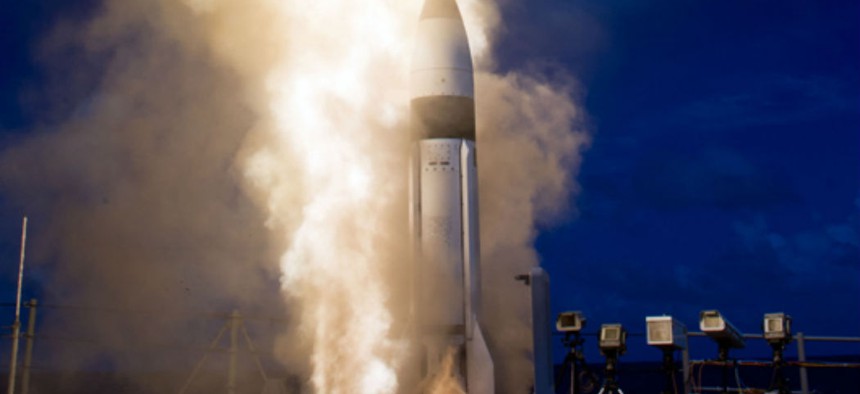New drone laser weapon could stop enemy missiles in boost phase
Proposals are being sought for a new high-altitude drone able to field a high energy laser for missile defense.
The Missile Defense Agency (MDA) is seeking a new high altitude long endurance (HALE) unmanned aerial vehicle with the unique capacity to carry a high energy laser system that can stop enemy missiles when they have barely left the launch pad, according to a new MDA request for information.
“Our vision is to shift the calculus of our potential adversaries by introducing these systems into the ballistic missile defense system,” said Chris Johnson, a spokesman for the MDA. “This could revolutionize missile defense, dramatically reducing the role of kinetic interceptors.”
As yet, no HALE unmanned aircraft have the capacity to field a high energy laser system. For the new UAV, the MDA is looking for the next generation of laser technology to build upon the Low Power Laser Demonstrator (LPLD) and firmly establish a U.S. capacity to defeat enemy ballistic missiles in their Boost Phase.
Possible new technologies for the high energy laser payload include fiber laser technology, which, Northrop Grumman asserts, produces a higher resolution laser beam over a longer distance. Fiber lasers can maintain a high power output because the surface area to volume ratio prevents the laser from overheating under sustained power levels. The fiber technology’s wave guidance abilities also limit the amount of thermal distortion, which can take place over long travel distances.
The LPLD was designed to test the decision by the MDA to use an electric solid-state laser, rather than a chemical one, in its high altitude aerial vehicles. It was intended to demonstrate the exact type of laser and packaging platform that would be needed for the planned HALE UAV, according to the MDA announcement last year.
Boost Phase is the brief period right after a missile launches during which ballistic missiles of any range, including ICBMs, can be engaged and destroyed. The MDA reports that the Boost Phase timing is strategically important because the missile is still emitting very hot and very visible exhaust from the launch, making it an easy target for detection, and any enemy measures to counter U.S. missile defense systems haven’t activated yet.
The window of time during which a missile can be intercepted in this phase is extremely small, only about one to five minutes, according to the MDA. Yet, unmanned aerial vehicles have enabled the boost phase intercept capability by extending sensor reach beyond the horizon, and giving more flexibility for sensor detection and engagement.
“MDA's long-term goal is to deploy lasers on high altitude, long endurance UAV platforms to destroy ICBMs in the boost phase at long standoff ranges,” explained Johnson.
According to the request for information, the MDA is looking for unmanned vehicle that can reach and maintain an altitude of 63,000 or more ft. and fly for more than 36 hours. Most importantly, the new HALE must have the ability to carry a payload of at least 5,000 lbs. and up to 12,500 lbs. It must also be able to provide a steady 140 to 280 kW of power to the payload laser system it is carrying.
Responses to the MDA request for information are due on August 16th and the MDA is looking at a tentative realization date in the early 2020s. When fielded, the HALE UAV with its laser payload will operate out of Pacific Missile Range Facility in Hawaii and Edwards Air Force Base in California.





